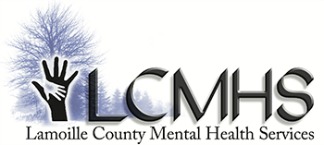April is Autism Awareness Month

In 1970, the Autism Society declared the first National Autism Awareness Month. The purpose for Autism Awareness Month is to educate, and bring awareness to, our community about Autism Spectrum Disorder (ASD). ASD is a neurological and developmental disorder that’s characterized in varying degrees by an individual’s social interaction, verbal or nonverbal communication, and repetitive behaviors. Prior to the current Diagnostic and Statistical Manual (DSM-V), ASD was considered to be an “umbrella” of distinct sub-disorders – Childhood Degenerative Disorder; Autistic Disorder; Pervasive Developmental Disorder- Not Otherwise Specified (PDD-NOS); and Asperger’s Syndrome. The key word is “spectrum;” individuals with autism may experience varying degrees of deficits or behaviors for each characteristic.
Increasing Awareness about the Common Characteristics of Autism
Each individual on the ASD spectrum is unique and characteristics are individualized to the person. Commonly-found symptoms include the items below.
Social Skills: Children with autism may present deficits in social communication. This includes play skills, language, and how to interact with others (e.g., avoiding eye contact). These deficits in social skills are one of the most common symptoms for individuals with ASD, but may look different among individuals. For example, one child may struggle with taking turns but will initiate playing a game with a peer. Another example, a child may show no interest in their peers and choose to play by themselves away from the group.
Physical Contact: Individuals with autism experience different needs in regards to sensory input. The most common types of physical sensitivities are touch, smell, sounds, sights and taste (the five senses). It’s important to keep in mind each person is different. Some may experience sensitivities to loud noises, bright lights or rough surface, particular clothing items, etc. The list is continuous and varying depending on the individual.
Speech: Language is one of the leading characteristics for diagnosing ASD. Individuals with autism may experience a delay in language or have no verbal language. Aside from the delay, autism is associated with multiple speech impairments such as Echolalia and Scripting. Echolalia, also known as “movie talk,” is characterized by the person repeating what he or she previously heard (either immediately or after time has passed). For example, a child hears the parent say "stop that," then repeats "stop that, stop that, stop that" repeatedly in different or the same tone. “Scripting” is characterized by the person repeating a previously-heard phrase. For example, a child may script a phrase in a song from a favorite show. Typically the most common sources for the repetition in both impairments are relatives, television, online games, and music. However, it is also common for phrases heard at home to be repeated in other environments.
Fun Fact: The Puzzle Ribbon is the symbol for Autism Awareness Month. Also, the puzzle piece is the universal symbol for autism.
Behavior: Individuals with autism often engage in repetitive behaviors, i.e., performing the same movement or action repeatedly. “Stereotypy” is a clinical term used to describe a specific type of repetitive behavior. Stereotypy serves to be automatic or self-stimulating, providing an insight into why the person engages in the behavior. Stereotypy may also include one or all of the five senses. Examples of Stereotypy include rocking (physical); flapping hands, shaking items close to their face (visual); making repeated verbal utterances (auditory); and other behaviors. Additional characteristics include following a structured routine, unusual sleeping or eating habits, perseveration, aggression (at times self-injurious), impulsivity or hyperactivity, among others. These are the most common types of behaviors, although each individual is different and their characteristics are unique to themselves.
Diagnosing ASD
Around 1 in 68 American children are on the autism spectrum–a ten-fold increase in prevalence in the last 40 years, according to ASD statistics from the U.S. Centers for Disease Control and Prevention (CDC). Studies also show that ASD is four to five times more common among boys than girls--an estimated 1 out of 42 boys and 1 in 189 girls are diagnosed with ASD in the United States. ASD can be diagnosed between the ages of 18 and 36 months; the diagnosis is based on developmental signs and symptoms (the terms autism and ASD are often used interchangeably). There is no single cause of ASD; rather, it is caused by the influence of multiple factors, such as, genetics, environment, etc.
The good news is that ASD can be treated with specialized therapies, such as speech therapy, occupational therapy, and Applied Behavioral Analysis (ABA).
If you're concerned that your child or a loved one may have ASD, you can watch for the following "red flag" behaviors identified by the CDC. The child:
- Shows no response to his or her name by 12 months of age
- Does not point at objects to show interest (e.g., point at an airplane flying over) by 14 months
- Does not play "pretend" games (e.g., pretend to "feed" a doll) by 18 months
- Avoids eye contact or wants to be alone
- Has trouble understanding other people's feelings or talking about his or her own feelings
- Has delayed speech and language skills
- Repeats words or phrases over and over (echolalia)
- Gives unrelated answers to questions
- Gets upset by minor changes
- Has obsessive interests
- Flaps his or her hands, rocks his or her body, or spins in circles
- Has unusual reactions to the way things sound, smell, taste, look, or feel




